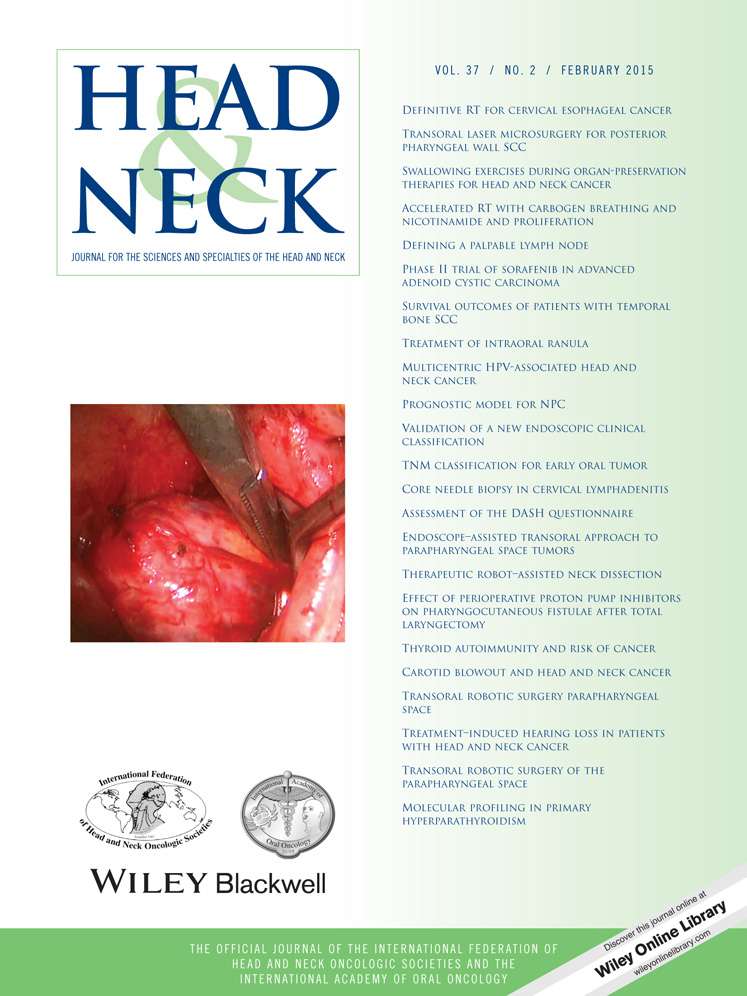Transoral robotic surgery of the parapharyngeal space: A case series and systematic review
David Eisele, MD, clinical reviews editor, was recused from consideration of this manuscript.
ABSTRACT
Background
The purpose of this study was to evaluate the current use of transoral robotic surgery (TORS) in the treatment of parapharyngeal space (PPS) neoplasms through a case series and systematic analysis.
Methods
A case series review of 4 patients was combined with a PubMed, Web of Science, and Scopus search that identified 82 reports. Fifty-three articles remained after screening for duplicates, finally, 8 reports with adequate patient data were included. Statistical analyses and graphical representations were performed with Microsoft Excel (Redmond, WA) and GraphPad Prism software (La Jolla, CA).
Results
Forty-four patients had TORS resection of PPS neoplasms. Overall, mean length of stay was 3.0 days with mean time to oral diet of 1.0 day. There were no recurrences but there was a mean follow-up time of only 18.5 months. Twenty-nine of these neoplasms (65.9%) were pleomorphic adenomas of which 7 (24%) had unintended capsule violation or tumor fragmentation during surgery and 2 patients had pharyngeal dehiscence that was managed conservatively. There were no neurovascular complications.
Conclusion
TORS is a viable approach to resection of neoplasms of the PPS with minimal surgical morbidity. However, further long-term evaluation, especially for pleomorphic adenomas, is needed to define patient selection and the role of TORS for PPS salivary gland neoplasms. © 2013 Wiley Periodicals, Inc. Head Neck 37: 293-298, 2015




